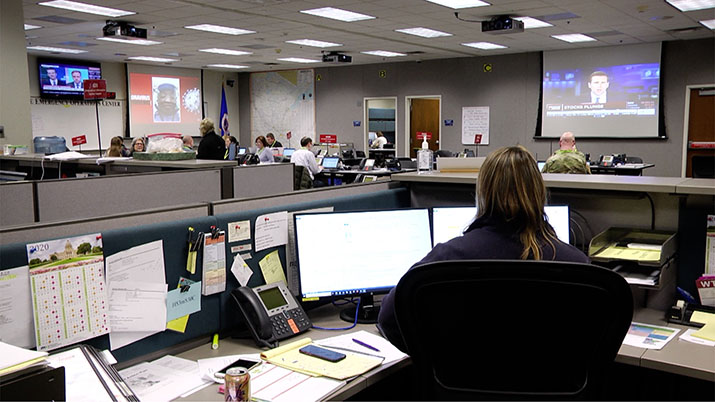The longest job you never knew about
July 8, 2021

Most of us think of emergencies as lasting only a few hours – a few days, at most. House fires. Car crashes. Natural disasters. But Minnesotans – and the world – just lived through an emergency that lasted almost 18 months. And the State Emergency Operations Center (SEOC), coordinated and hosted by our division of Homeland Security and Emergency Management (HSEM), was in full activation for all 475 days of it. That record-setting activation officially ended last Friday, July 2, after beginning March 15, 2020.
During an SEOC activation, emergency preparedness representatives from state and federal agencies gather in one room (although, in this case, sometimes that room was virtual). They make sure whomever is involved in the incident gets the proper support, and they make it easier for agencies to communicate with one another. Communication is critical when lives are at stake.
In the case of the COVID-19 activation, the SEOC's job was to support the Minnesota Department of Health (MDH) in its mission to “prevent the uncontrolled spread of the virus in Minnesota." That meant everything from distributing personal protective equipment and hand sanitizer to coordinating testing; from contact tracing to helping staff nursing homes and the vaccine site at the State Fairgrounds. Whatever the MDH needed on any one of those 475 days, the staff of the SEOC worked to make happen, some of which they had never done before. SEOC staff created solutions from scratch; there was no template.
Emergencies don't politely stick to business hours or happen one at a time. While the SEOC was activated for COVID-19, they also dealt with 10 natural disasters, the civil unrest surrounding George Floyd's murder, and keeping the peace during the Derek Chauvin trial. Sometimes the SEOC ran weekdays and closed at 5 p.m.; other times it ran 24 hours a day, seven days a week, with some staff sleeping on their office floor. If the phone rang at 2 a.m., they picked it up.
COVID-19 presented an emergency so big, no one state agency in Minnesota was equipped to handle it alone. It covered every aspect of our lives: health, unemployment, agriculture and public safety, to name a few. It took a total mobilization of state government, along with private and nonprofit organizations, to respond to this once-in-a-century pandemic. The SEOC helped them bring in the resources, coordinate their efforts, and make connections. Without that amount of teamwork, Minnesota would likely have lost far more people to the virus. Instead, the governor has lifted the peacetime state of emergency and 70 percent of us have received at least one dose of the vaccine.
Most Minnesotans likely had no idea all of this work was happening on such a massive scale behind the scenes. And that's the way it should be. As HSEM Director Joe Kelly put it: “If the public doesn't know about the SEOC or the work we do, that's a good thing. That means we did our job."
Now that the activation is over, HSEM staff working in the SEOC are back to their normal operations – monitoring the situation around the state and preparing for whatever might happen next. It's mostly business as usual. But when something flares up – like a flood, tornado, or ice storm – HSEM can activate the SEOC again and support the people solving the problem and keeping Minnesotans safe.

